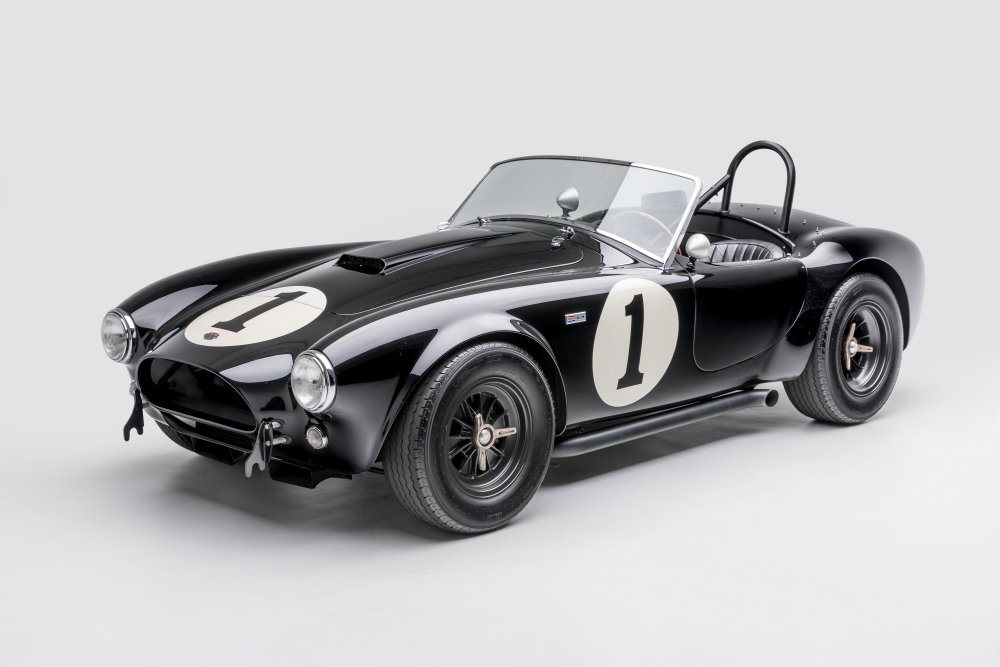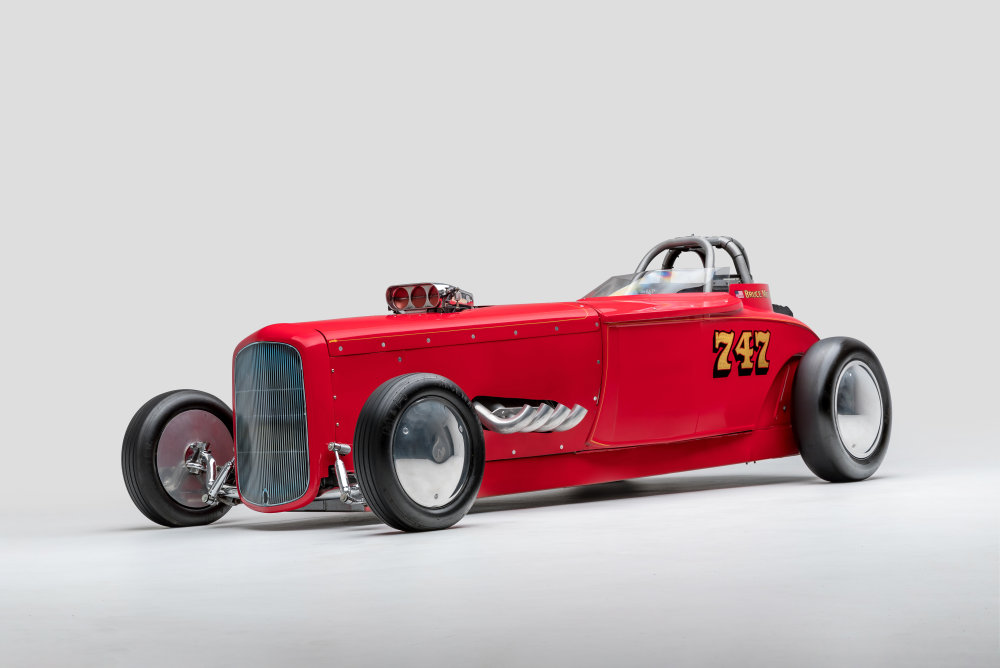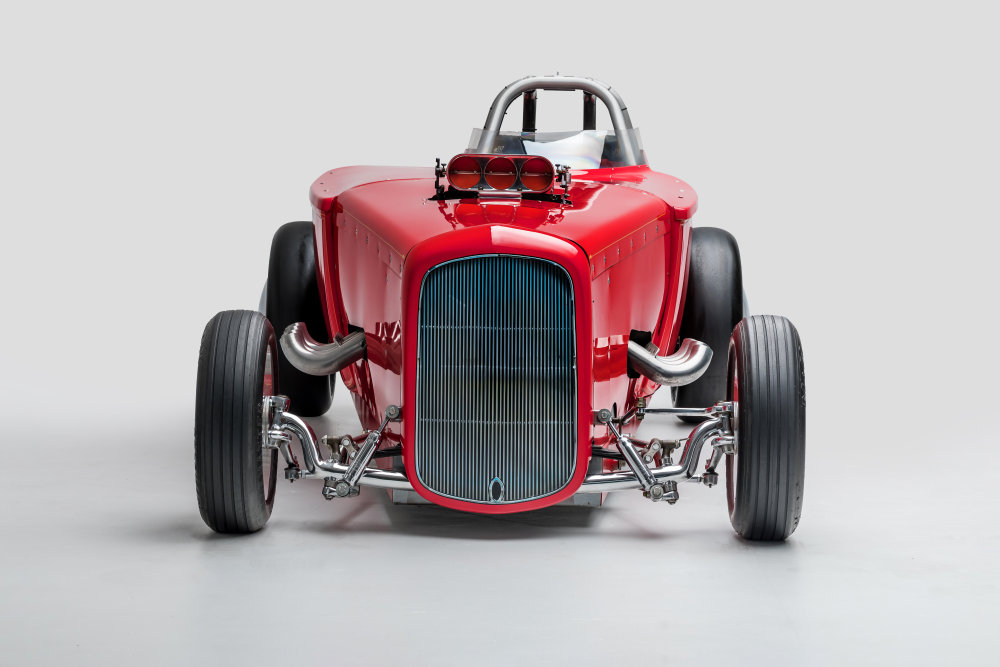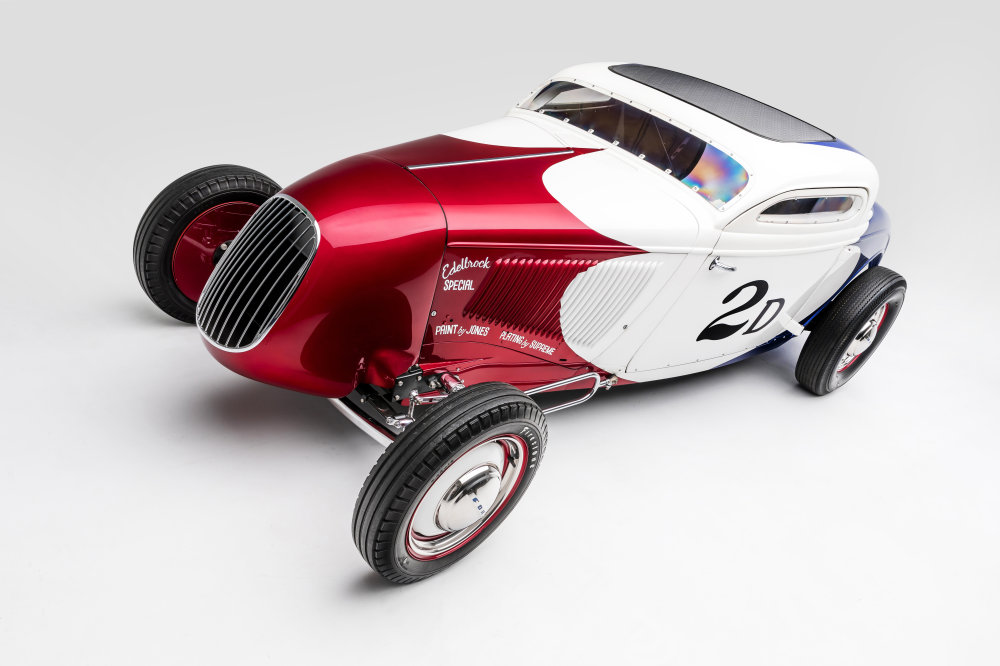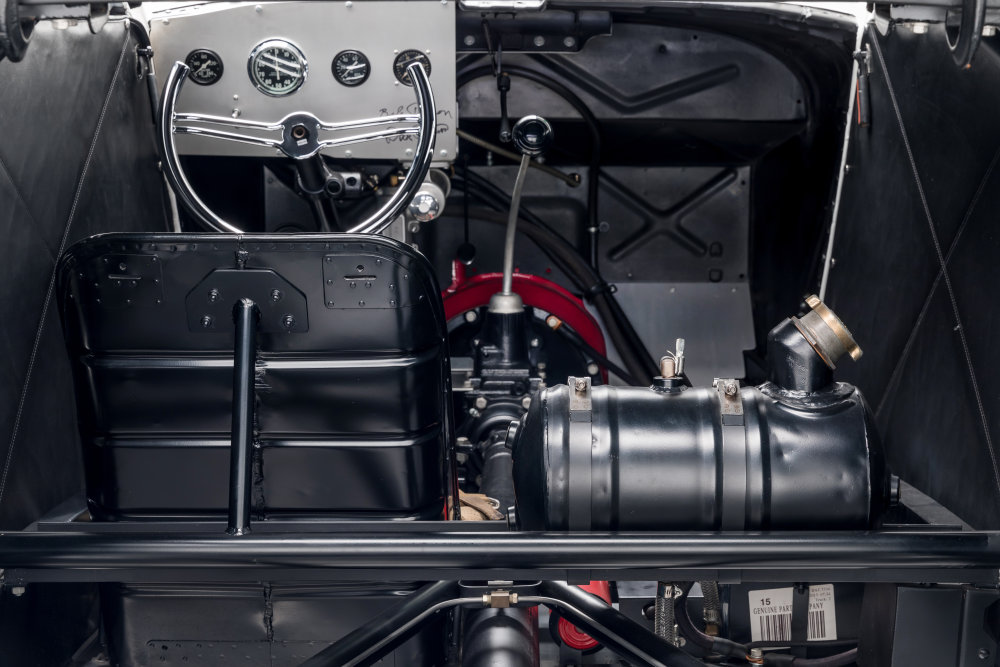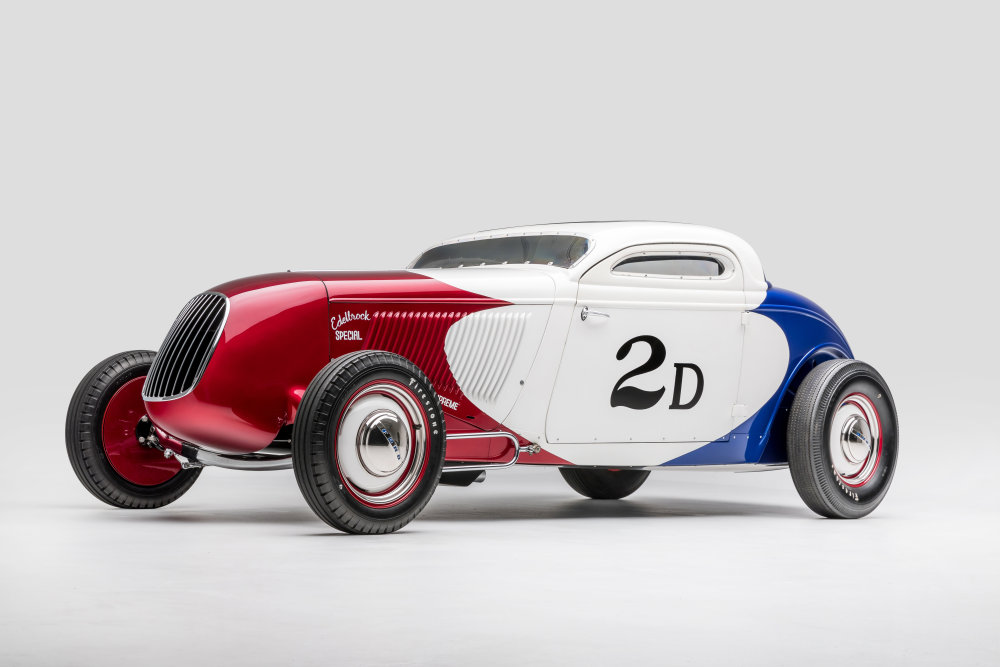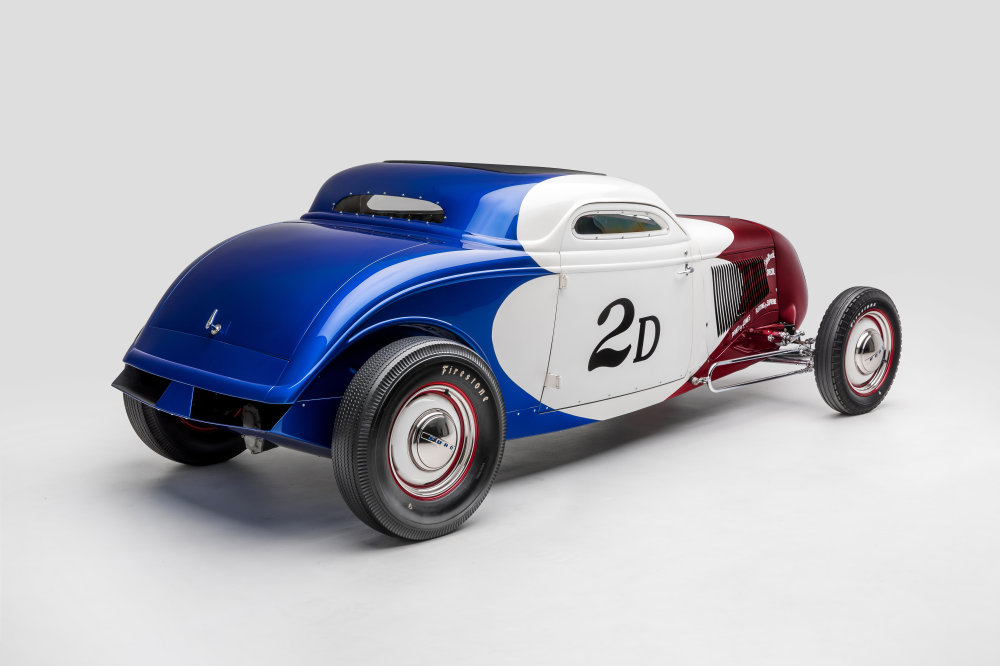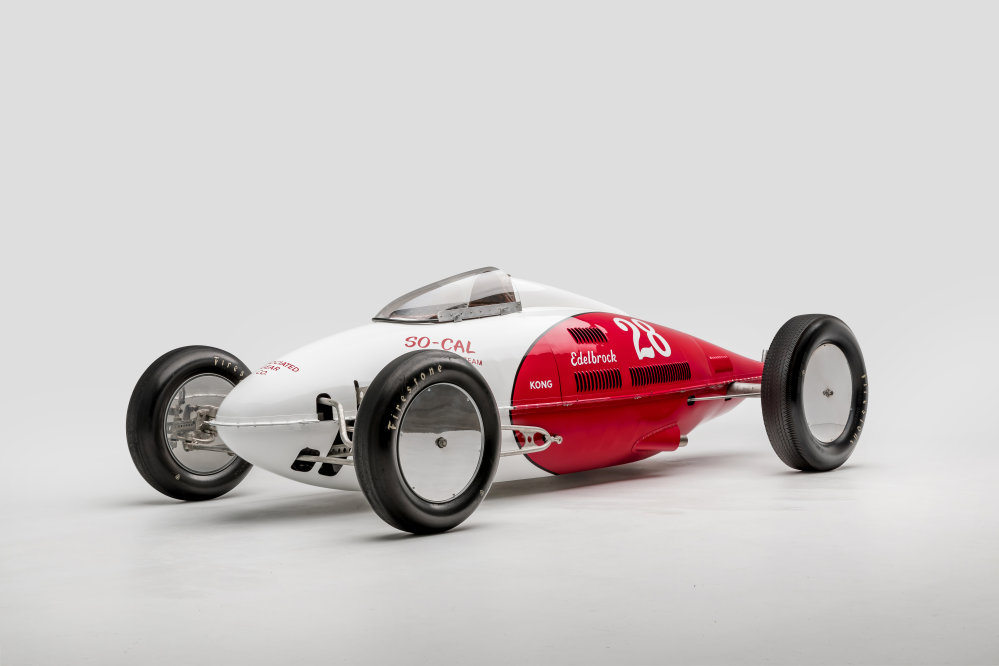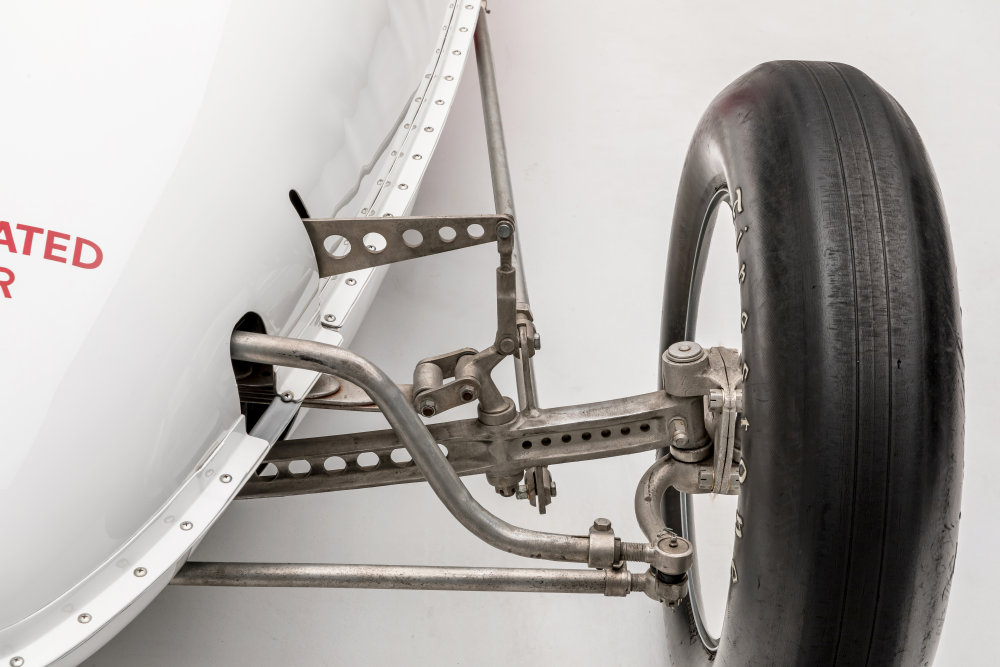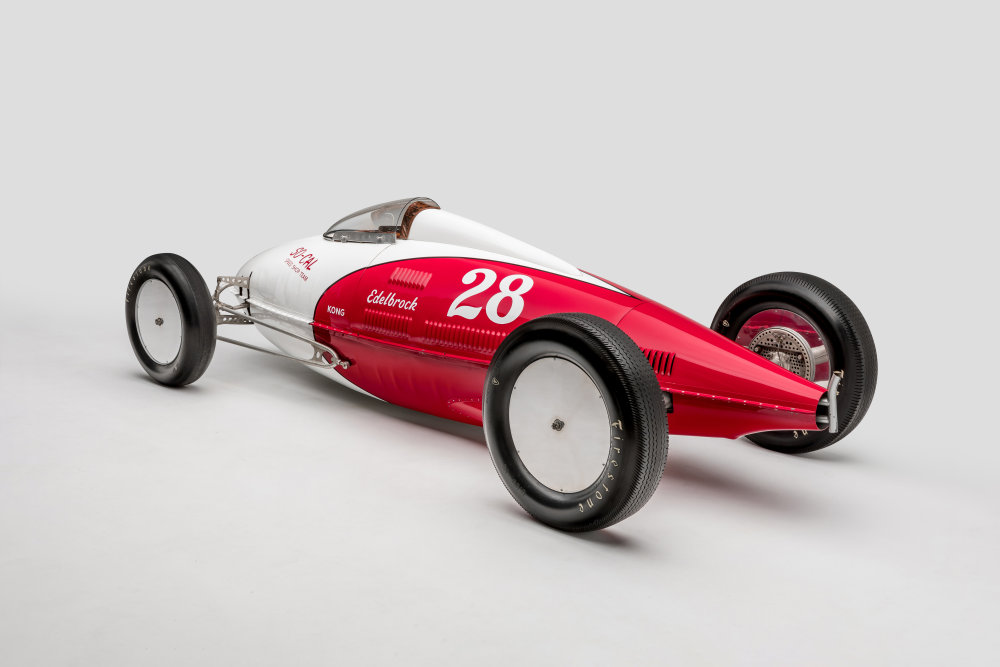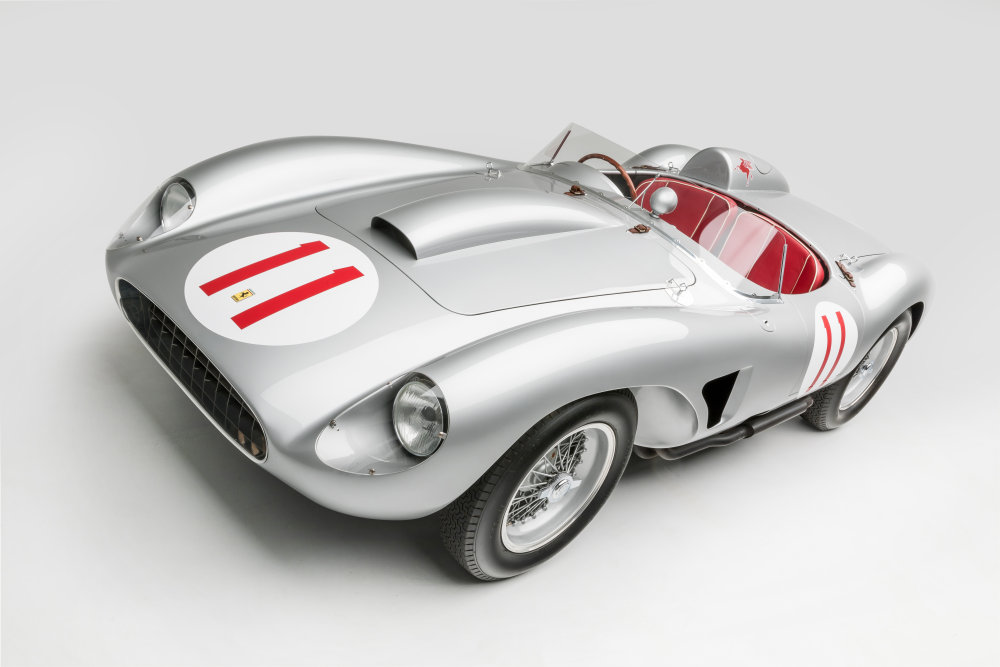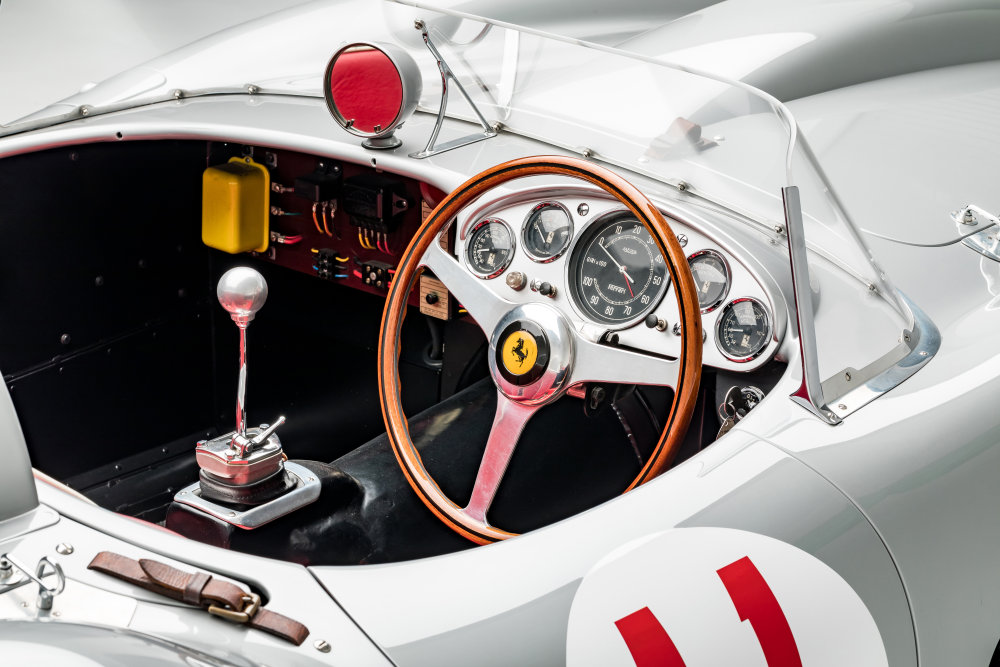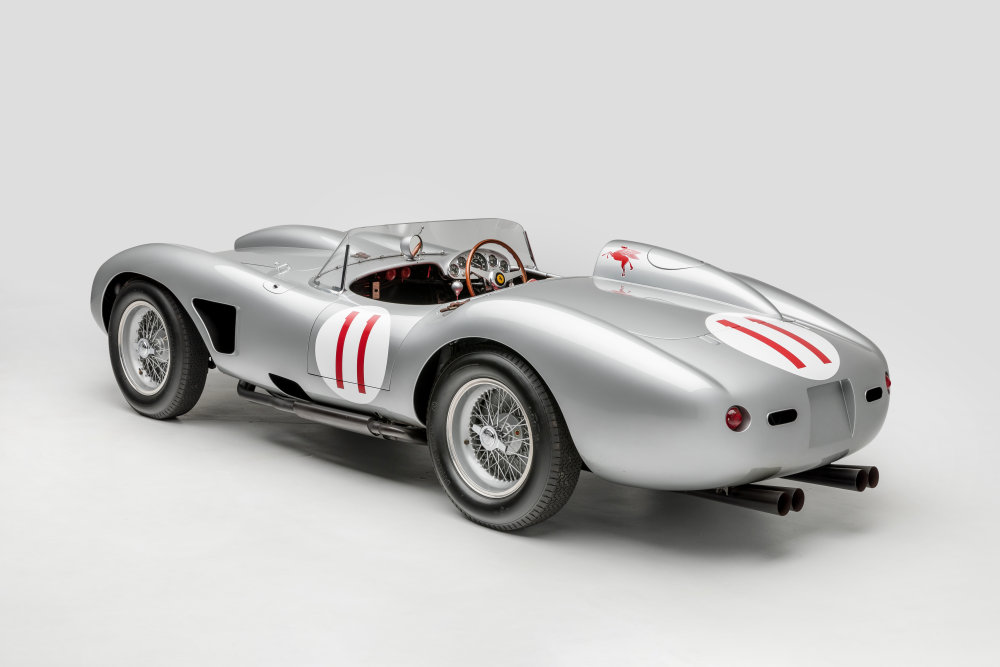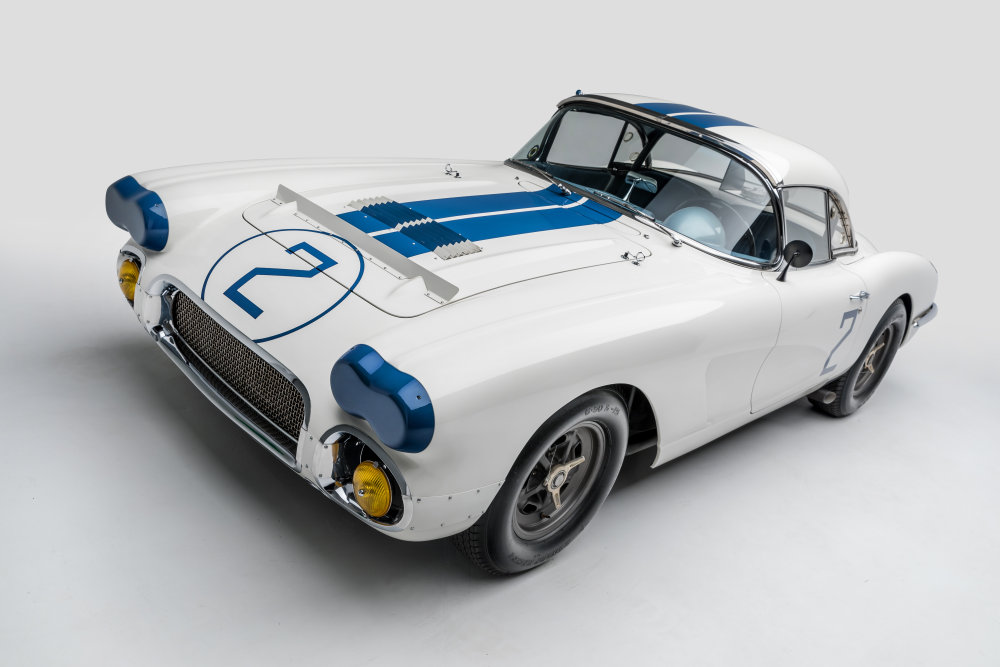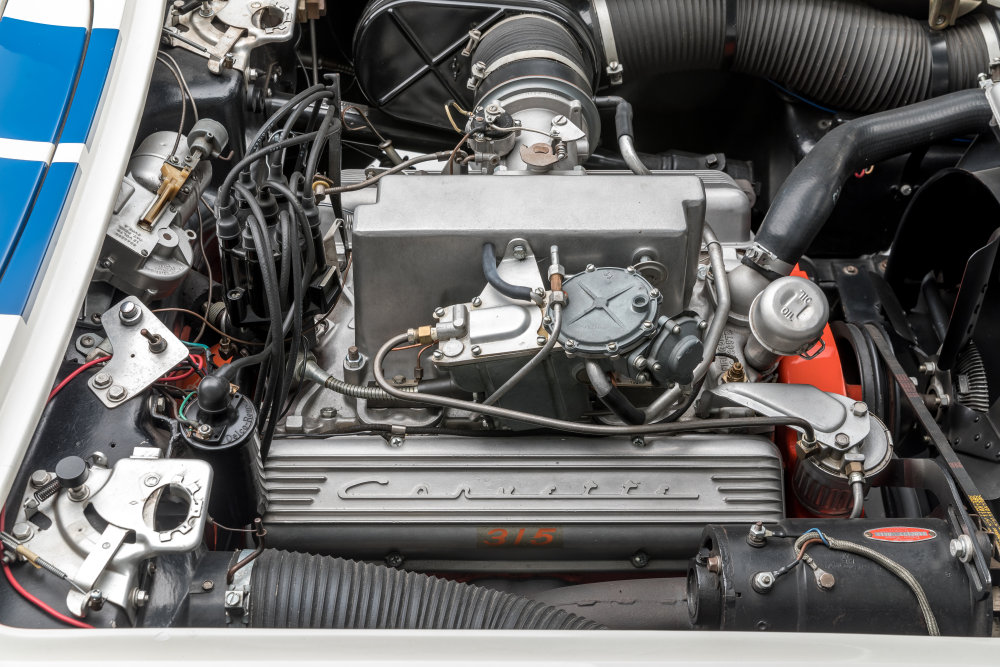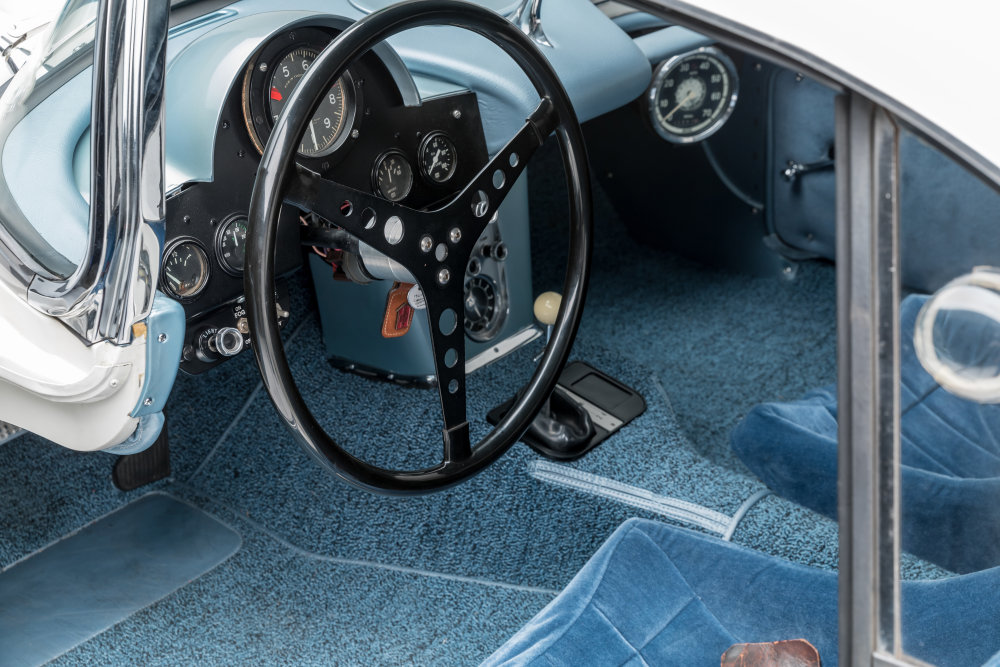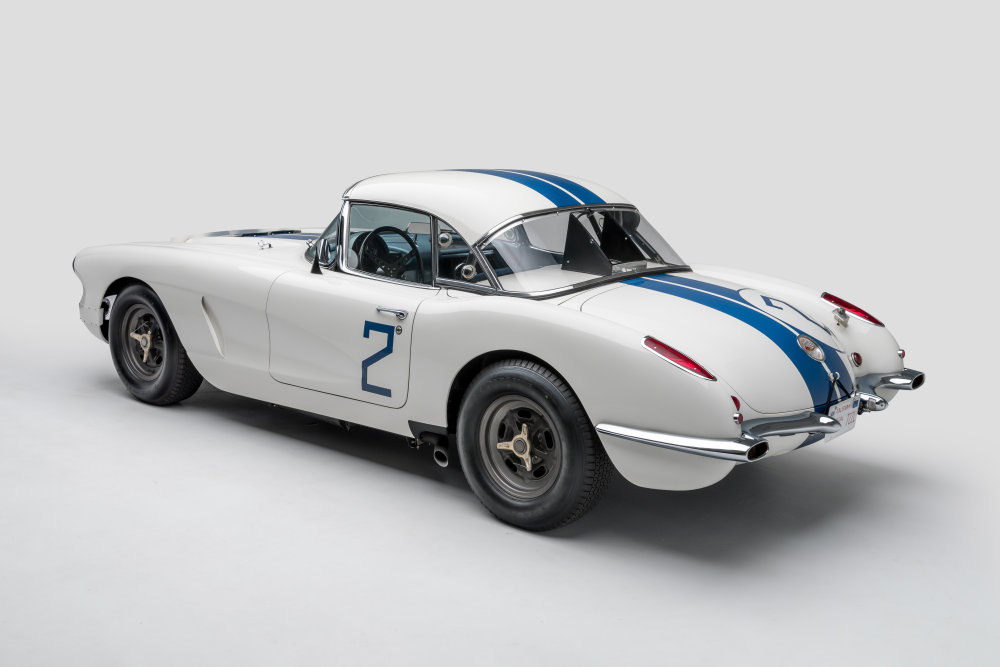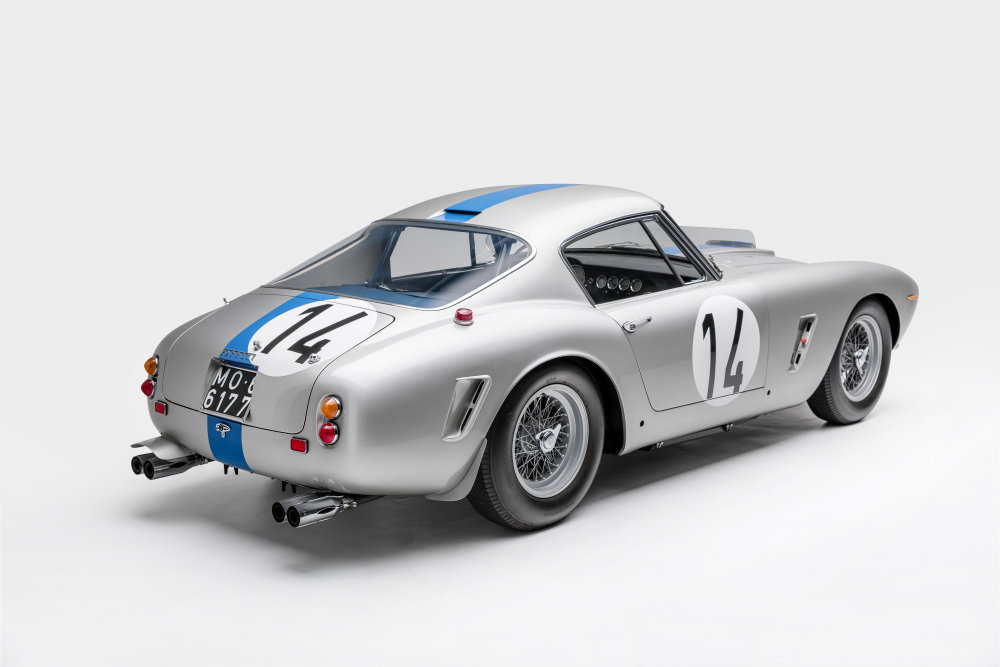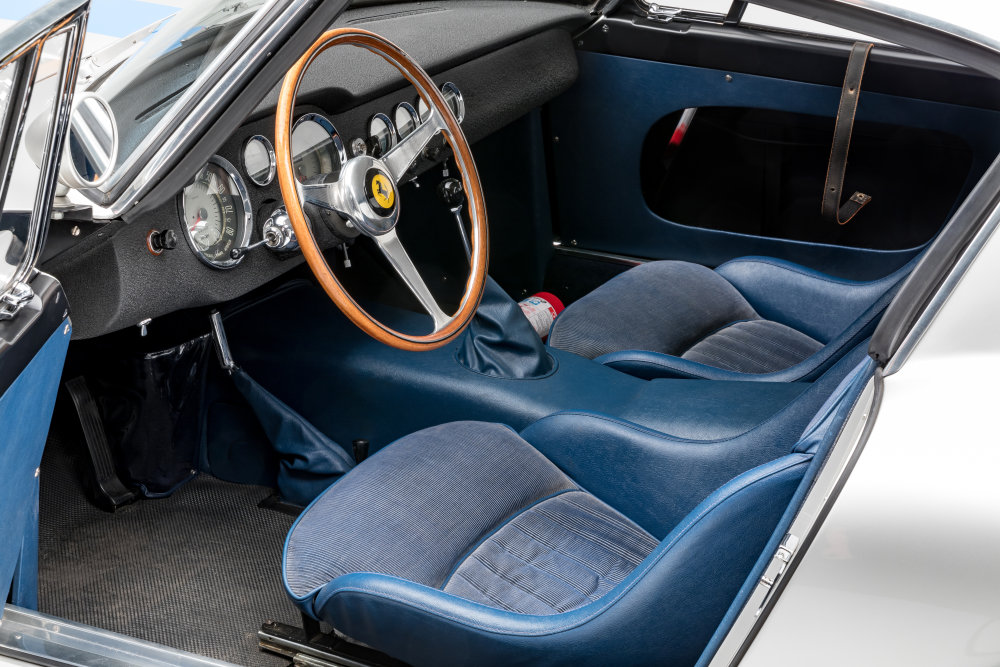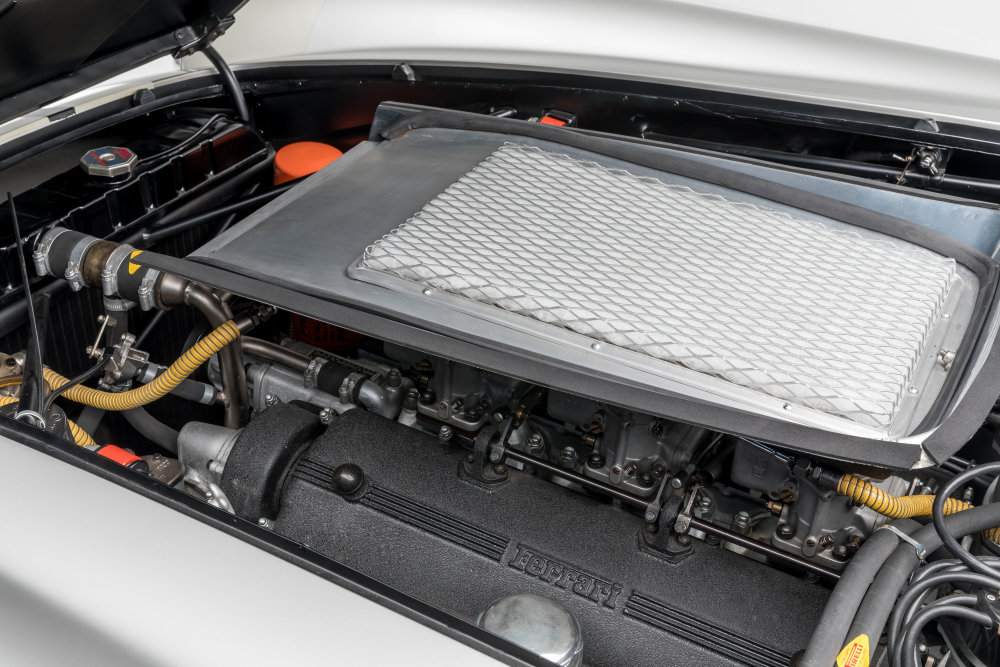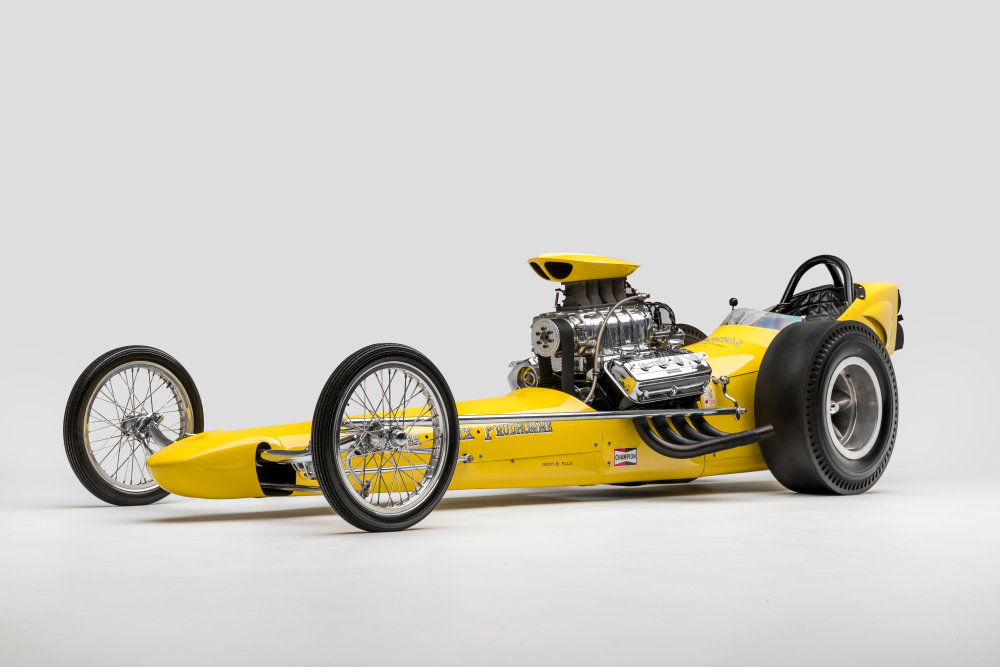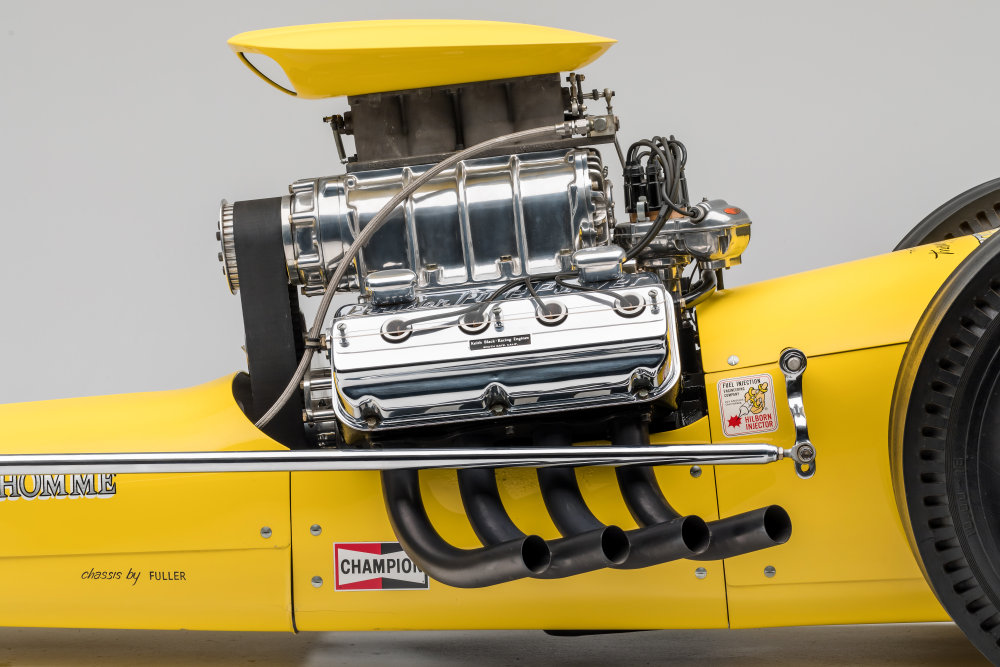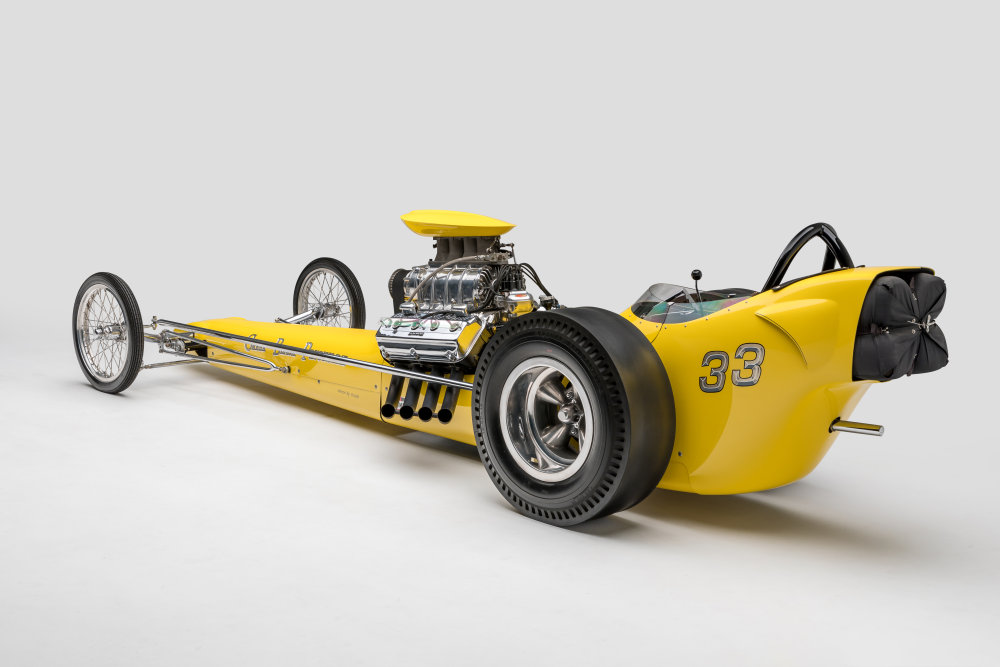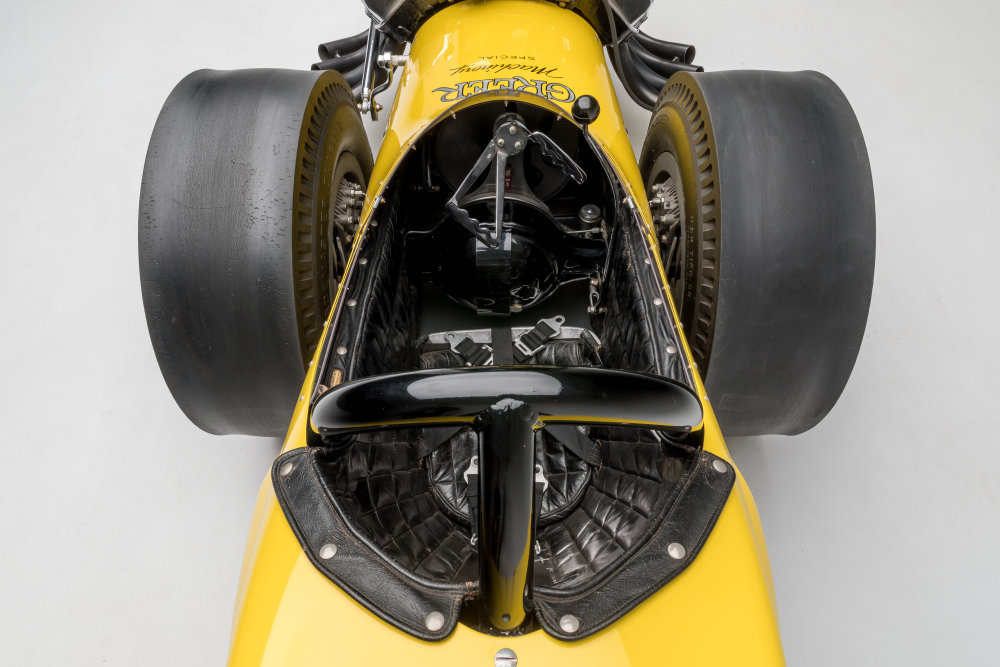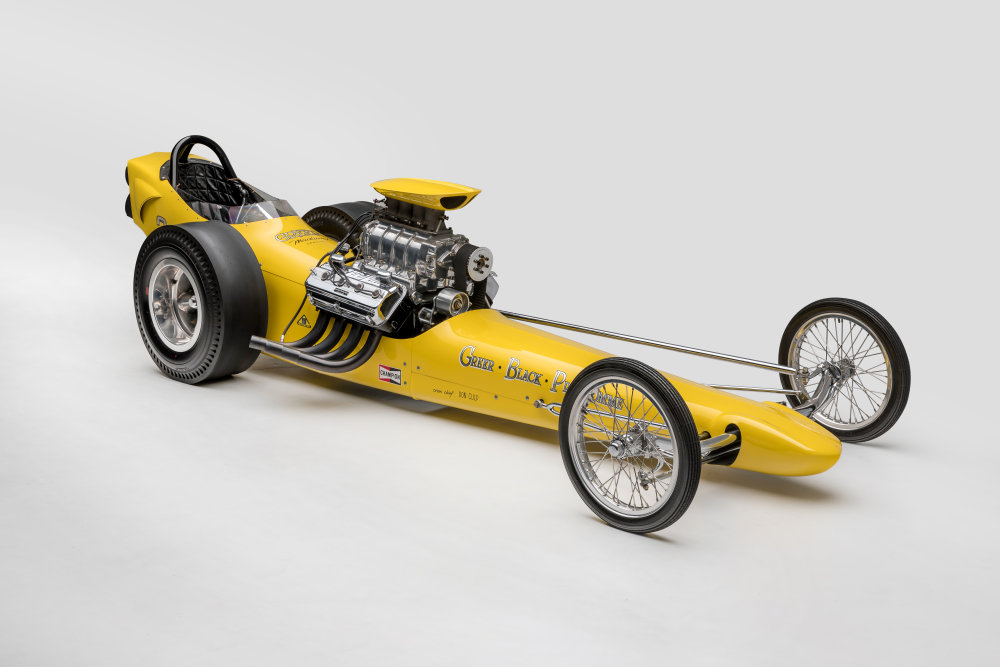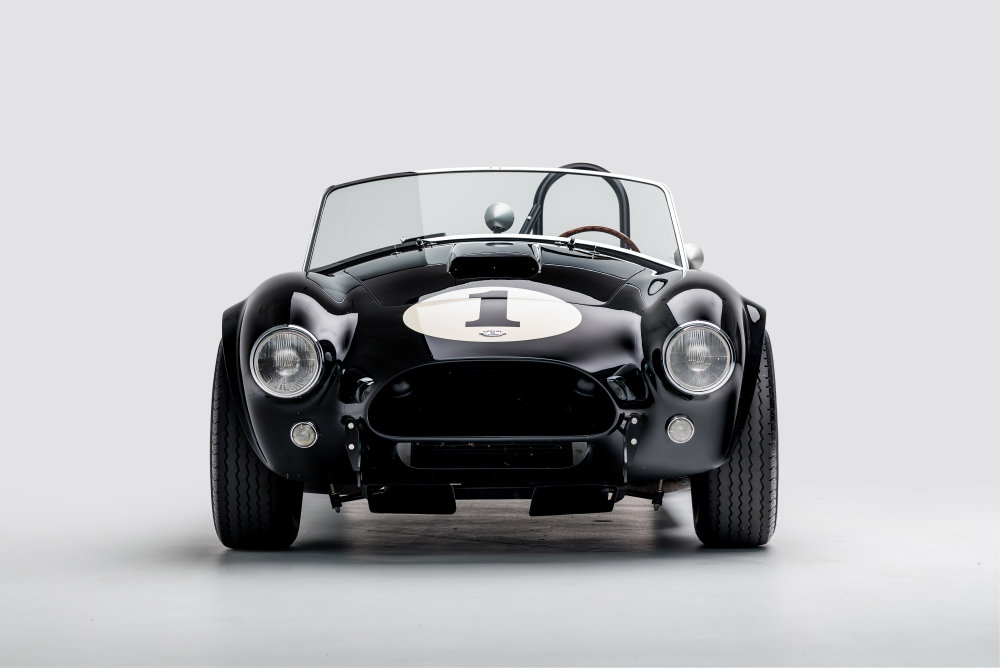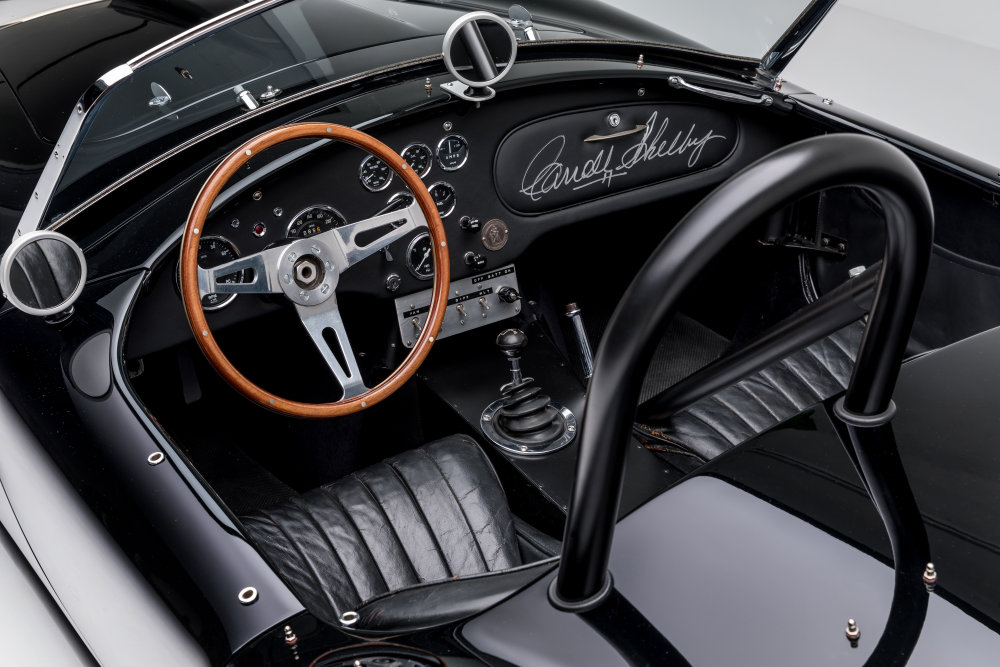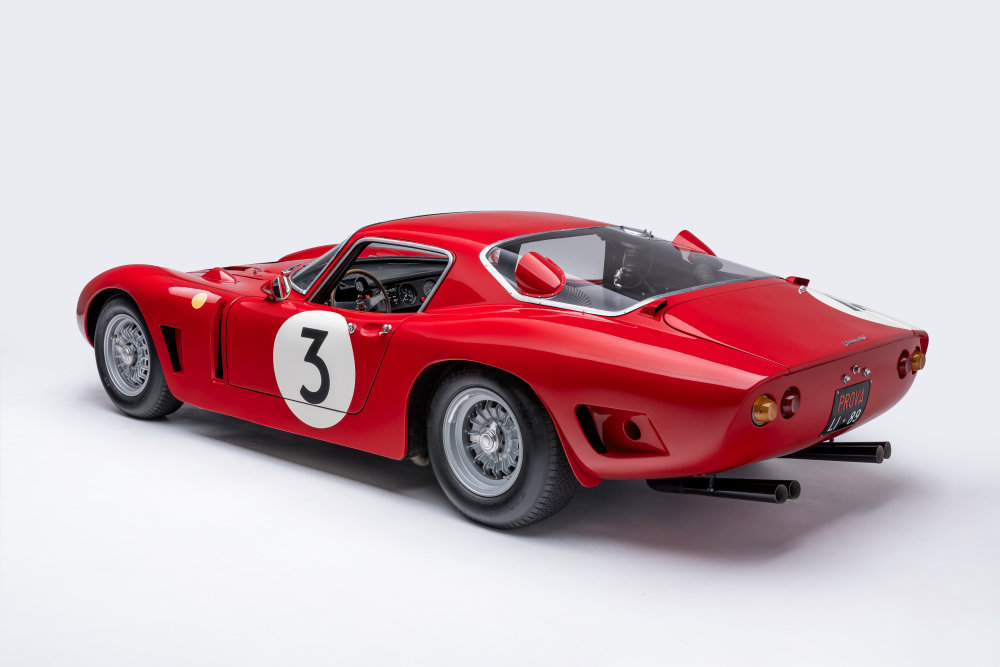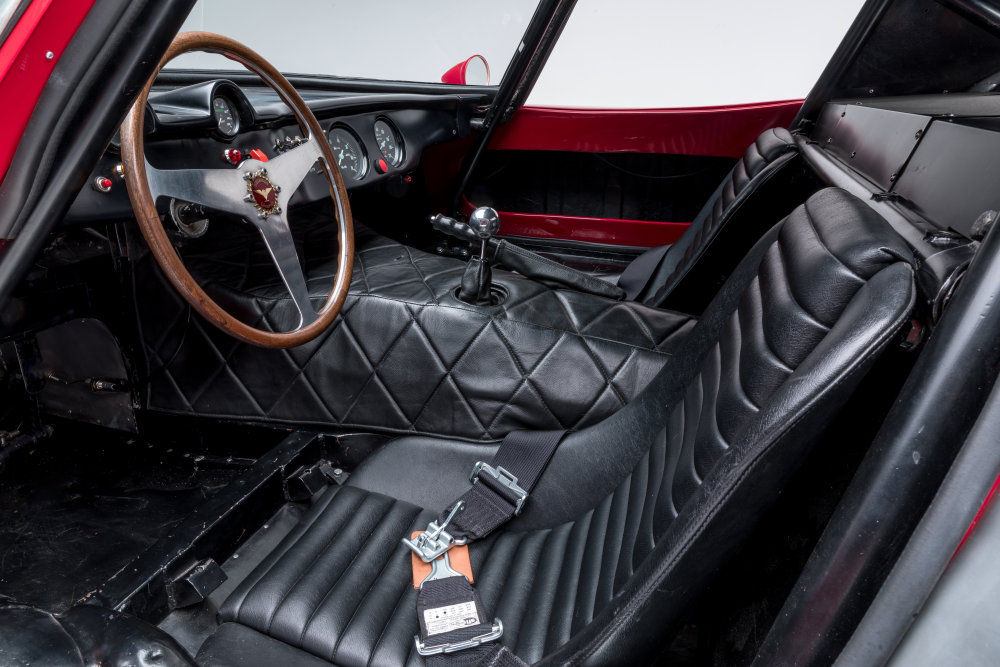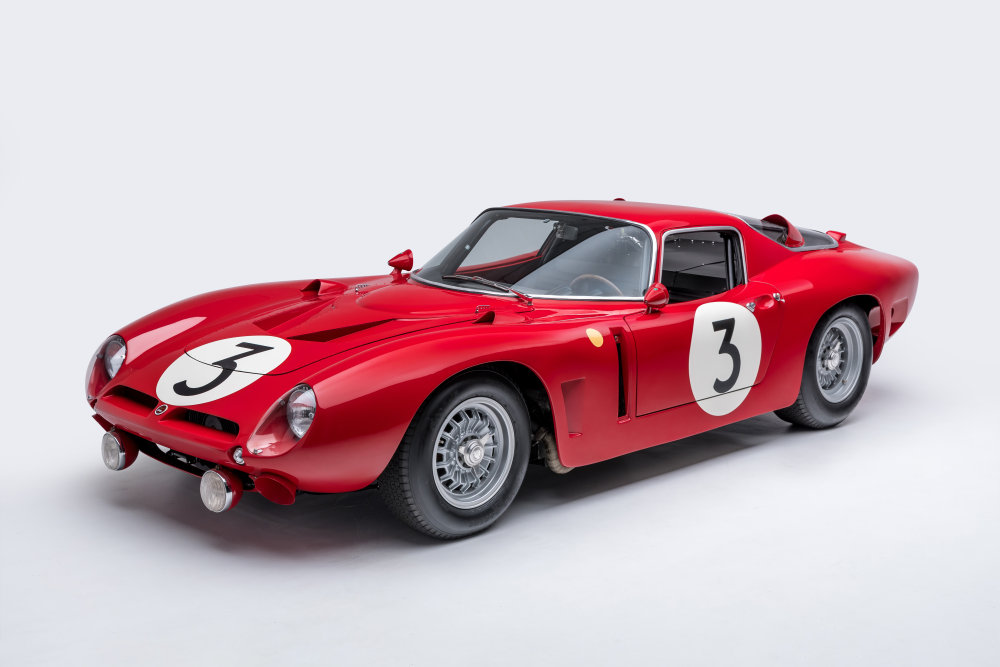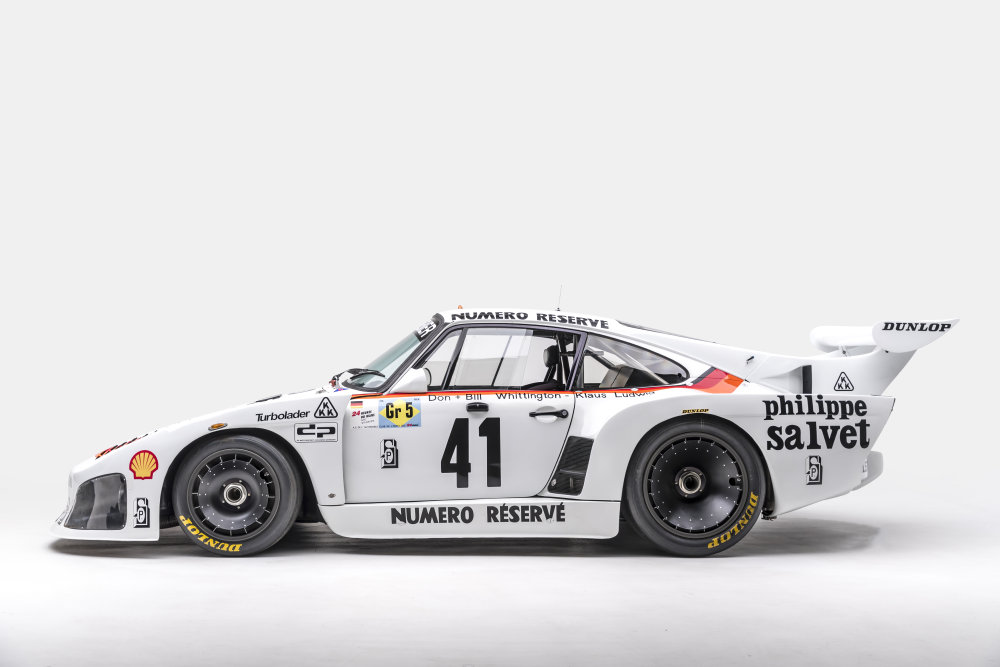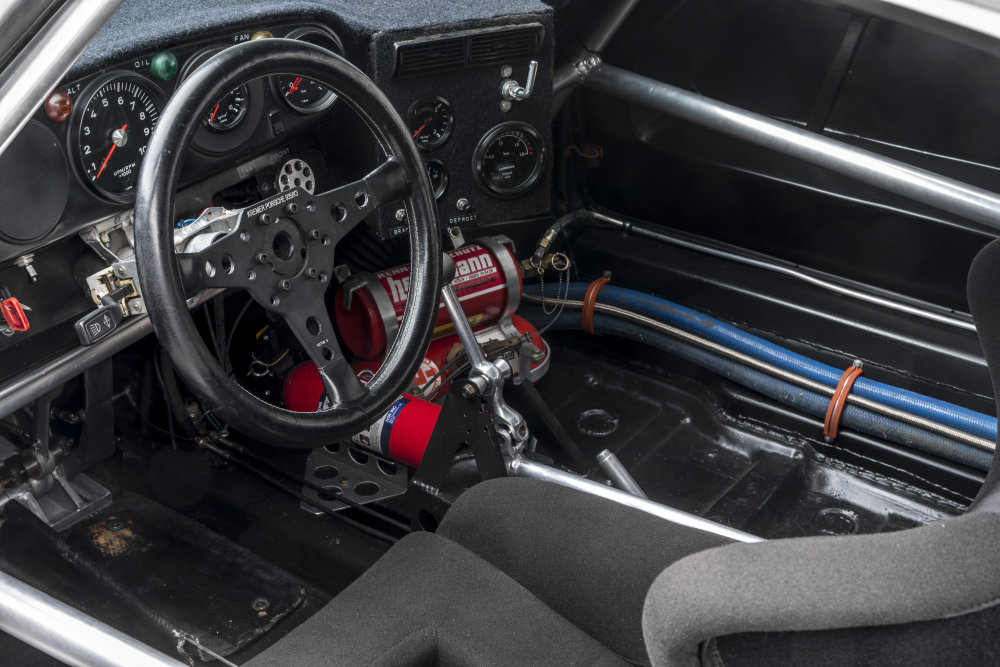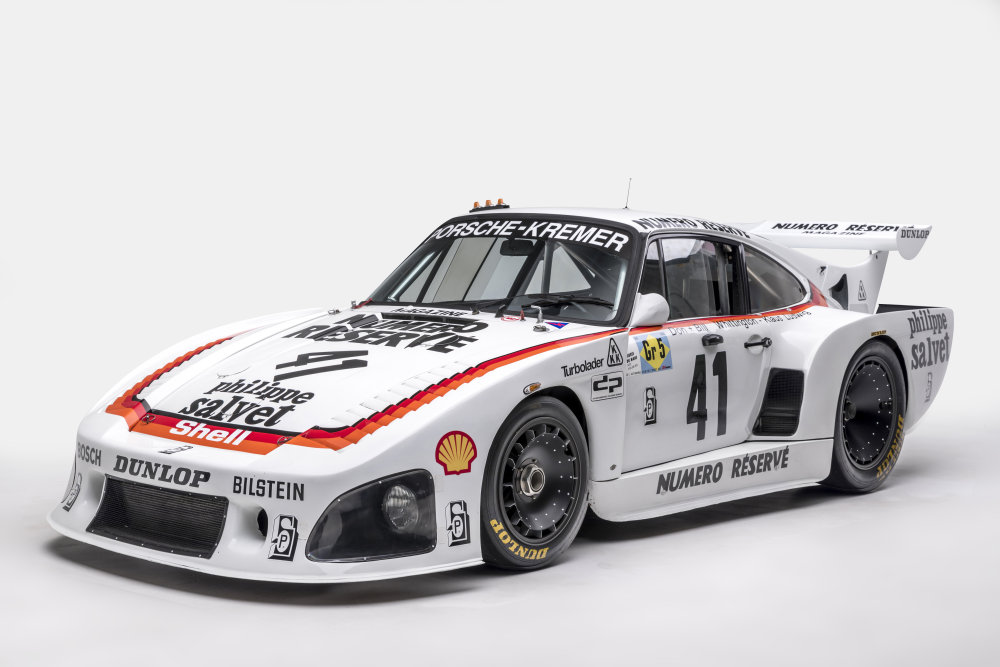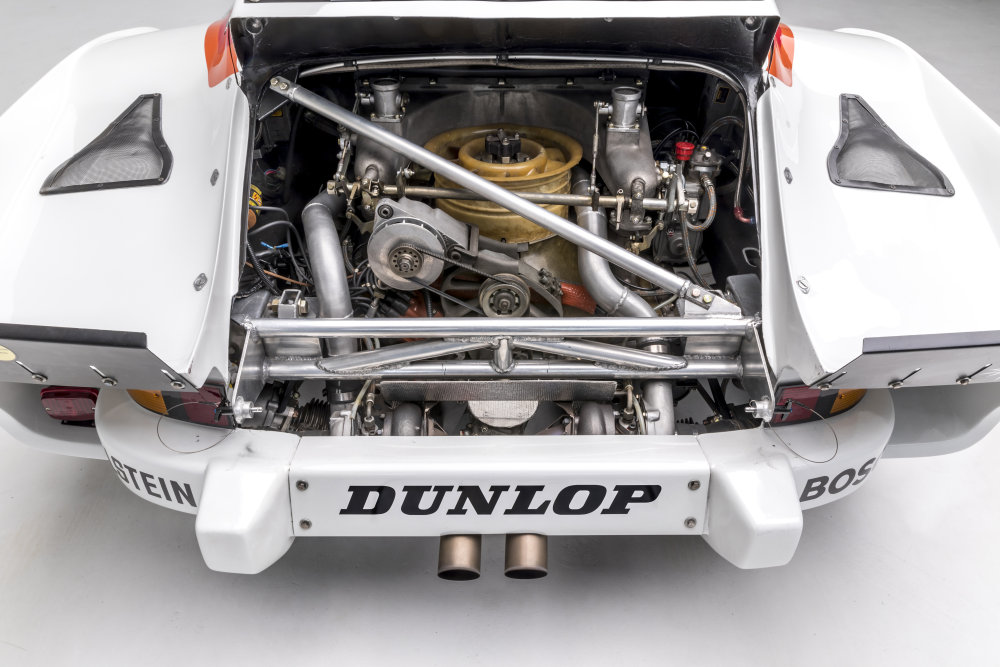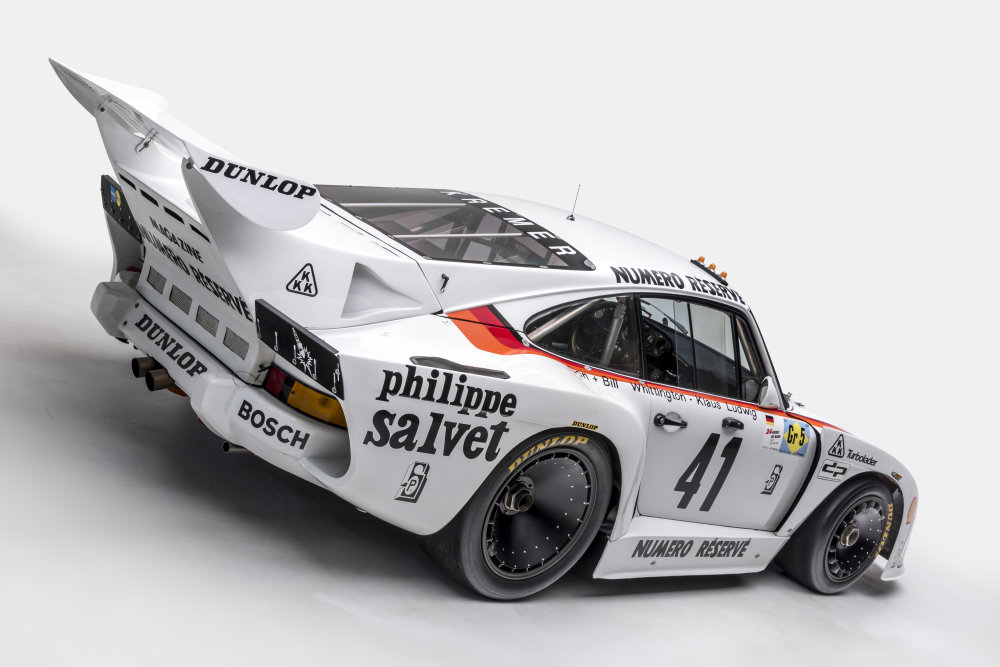New Peterson Automotive Museum Features 10 of History’s Greatest Race Cars
Legendary race cars from Ferrari, Shelby, Porsche and more make this the Peterson’s winningest collection.
The Peterson Automotive Museum in California is one of the most impressive displays of vehicular history in the world, but with the introduction of the museum’s newest display, some of the greatest race cars in motorsports history have joined the spread. From road racers to drag racers to high-speed record-setters, “Winning Numbers: The First, The Fastest, The Famous” offers racing heritage like few other collections in the world.
“Affectionately called ‘the car guy’s car guy,’ Bruce Meyer epitomizes true automotive passion,” said Petersen Automotive Museum Executive Director Terry L. Karges. “The charisma with which Bruce shares his passion is what sets him apart. ‘Winning Numbers’ reflects his discerning tastes as a collector and motorsports enthusiast, and we’re proud to share his fervor for the hobby with the community.”
If you have an interest in classic race cars of any kind and you live within a reasonable distance of the museum, you will definitely want to make a trip to check out these legendary go-fast machines, but for those of you who cannot make it to Los Angeles to see the collection in person, here is a look at each of the 10 vehicles in the exhibit.
1929 Ford 747 Bonneville Racer
This uniquely-modified 1929 Ford was driven by Bruce Meyer at the Bonneville Salt Flats, hitting 204 miles per hour on the dry lake bed back in 2012. He did so after hitting 222 miles per hour with a modified Camaro, but he wanted to break 200 in an open-cockpit car.
This machine is powered by a 427-cubic inch Chevrolet V8, built by Mike Cook.
1934 Ford Pierson Brothers Coupe
In the 1930s and 1940s, dry lake bed racing was all the rage in California, but the fields were comprised entirely of open-cockpit cars. That changed in 1949, when the Russetta Timing Association began allowing coupes to compete in their events and by 1951, coupes and sedans had their own classes in the SoCal lake bed racing scene.
One of the best-known racing coupes on the scene was a 1934 Ford coupe that wore the number 2D, built by Bob and Dick Pierson in 1949 with help from Edelbrock’s Bobby Meeks. This was the first racing coupe in the area to feature a significantly-modified body, with a chopped top and a shortened windshield offering improved aerodynamics over the stock shape. More importantly, this car offered by aerodynamics than the racing roadsters of the era.
In addition to the physical changes, this 1934 Ford is powered by a worked flathead engine, helping it travel at speeds in excess of 150 miles per hour on the dry lake bed.
After being campaigned by the Pierson brothers, the car changed hands several times from 1951 through the 1990s, at which point Bruce Meyer purchased the car and had it fully restored by the SoCal Speed Shop.
1952 SoCal Speed Shop Special Belly Tank Racer
During World War II, American aircraft being used to cross the Pacific Ocean needed extra fuel capacity. The solution was to add “belly tanks”, which were aerodynamic auxiliary fuel tanks that were attached to the underside of the plane and filled with fuel.
When these tanks were emptied out, they could be dropped mid-flight to prevent excess weight or bulk when headed to war. Once the war ended, there was tens of thousands of these metal pods sold to the public through military surplus sales.
While serving in the U.S. Navy, Bill Burke came up with the idea of using a belly tank as the body of a race car, measuring the tanks for a P-51 to see if they would work. Once he was discharged from the Navy, he purchased a P-51 belly tank and converted it into a successful land speed car, but a short time later, he found that the P-38 tanks would work bigger.
The most successful of the P-38 Belly Tank racers was the one shown here, built by SoCal Speed Shop and Burke. This car set a handful of land speed records, turning in a top speed of 198.34 miles per hour with a Ford flathead V8 in 1952. As time went on, the lack of safety equipment caused belly tank racers to fall from grace, but Bruce Meyer added this one to his collection.
1957 Ferrari 625 250 Testa Rossa
There have been countless legendary Ferrari race cars that have won just about every major race in the world in which they could compete, but this 1957 Ferrari 625/250 Testa Rossa is said to be the winningest race car in the brand’s history.
This factory-built race car ran in 50 races and won more than half of them. We don’t have the exact number, but even if it “only” won 26 of those races, it was remarkably successful against the best sports cars in the world at that time.
This 625 250 Testa Rossa is powered by a 2.5-liter, single overhead camshaft V12, topped by six Weber two-barrel carburetors and delivering 320 horsepower. It also features a host of suspension and chassis bits that helped to make it one of the fastest cars on the track in the late 1950s.
1960 Chevrolet Corvette C2
This 1960 Chevrolet Corvette race car never won a race, but it is one of the most important cars in the history of the Corvette endurance racing program.
This Corvette was one of three purchased by Briggs Cunningham as part of a deal with GM engineer Zora Arkus-Duntov. Duntov played a key role in the early life of the Corvette and he had been looking to get the car to race at LeMans. Cunningham was the driver and team leader that GM needed to make that happen.
1960 Cunningham Corvette #2 served as the first test car for the program, running some strong laps at Sebring before the engine expired. After some tweaks to the V8 mill, a second test outing led Cunningham and his team to believe that they were ready for LeMans, so they packed up three cars and headed to France.
The Cunningham Corvettes were fast early on, but the #1 car flipped over early in the race and the #2 car also crashed badly enough to push it way back in the field. The #2 car would nearly make it to the end of the race, but an engine failure forced the team to come up short. However, the #3 Corvette won the class at LeMans, beginning a long and storied history of Corvette endurance racing.
After LeMans, Cunningham sold the cars and moved onto another brand. Over time, this Corvette was driven hard as a street car before being restored in the 1990s and after that, Bruce Meyer added it to his incredible collection.
1961 Ferrari 250GT SWB
In the late 1950s and early 1960s, the Ferrari 250 GT SWB was a dominating force in the world of motorsports. A 250 GT SWB claimed each of the first four spots in the class at the 1960 24 Hours of LeMans and this particularly car, wearing number 14, claimed class victory at the 1961 24 Hours of LeMans race. It also finished first overall at the 1961 Coppa InterEuropa at Monza while piling up the wins all over the map in 1962.
The Ferrari 250 GT SWB (short wheelbase) was similar to the long wheelbase cars, except the chassis had been shortened by 20 millimeters to 2,400 millimeters, which the engineers thought was the perfect length for a car that was great in the corners and the straights.
When compared to the 250 GT race cars with the long wheelbase, the most obvious difference is the lack of the fixed rear quarter windows on the shorter cars.
The Ferrari 250 GT SWB was powered by a Tipo 168 V12 that delivered 280 horsepower. That doesn’t seem like much power by modern standards, but in the 2,300-pound 250 GT SWB, it made for a very fast race car, reaching speeds of nearly 170 miles per hour.
1962 Greer Black Prudhomme Top Fuel Dragster
There are few names in the history of the sport of drag racing that are better known than that of Don “The Snake” Prudhomme and of the many cars he raced over the years, none were as dominating as his 1962 Greer dragster.
Powered by a Chrysler Firepower Hemi V8 measuring 392 cubic inches, Prudhomme and his 1962 dragster competed in 241 races and won an unbelievable 237 of them. That is a winning percentage of 98%, making this the most successful car in the history of motorsports.
There are surely other cars that lost less than four races, but to lose just four times in 241 races is truly legendary.
With numbers like that, it is fitting that this is the only drag car in the new exhibit.
1962 Shelby Cobra – CSX2001
The Shelby Cobra was the first American-powered sports car to truly challenge the Europeans on their turf and the legendary of the Ford-powered roadster began with CSX2001. This is the very first Cobra built by Shelby back in 1962, leading off a chain of performance cars that would make Carroll Shelby a legend in the world of race cars and road cars.
This 1962 Shelby Cobra was one of the first 75 delivered to buyers, but it didn’t come from the factory with a V8 engine. Instead, this Cobra was powered by a Ford-Zephyr six-cylinder engine, but it was quickly to the Shelby American facility in California to have a 260-cubic inch V8 installed.
This car was later sold to Lloyd ‘Lucky’ Casner, who planned to compete in the 1964 24 Hours of LeMans, but the 260 wasn’t powerful enough and the car was quickly sold to a new owner, who had a 289-cubic inch Ford V8.
With a host of other FIA-required upgrades, this car raced around Europe from 1964 through 1966 and it would remain on European solid until 2006 before being shipped to the United States, restored and added to Bruce Meyer’s collection.
1965 Bizzarrini Iso Grifo A3C
While the modern world of prototype endurance racing is dominated by big names like Audi, Toyota, Cadillac and other mainstream automakers, back in 1965, a Ferrari engineer built a custom car with a Corvette engine to go racing at LeMans.
That prototype race car was the Bizzarrini Iso Grifo A3C and in 1965, it won its class in the 24 Hours of LeMans race while turning in the highest top speeds on the track’s Mulsanne Straight.
After designing some legendary Ferrari models including the aforementioned 250 GT SWB, engineer Giotto Bizzarrini left the company and paired up with Iso Rivolta, building race-ready sports cars. One of his creations was the Grifo A3C shown here, which featured a sleek body, a high performance suspension setup and a 435-horsepower Corvette engine.
This particular A3C won the 5,000cc-and-over class at LeMans in 1964 while also being one of just 29 examples of the unique sports car made during the short production run.
1979 Porsche 935 K3
In 1976, the FIA introduced the rules for Group 5, a class of race cars that were loosely based on production road cars. Group 5 allowed for a long list of modifications, requiring only the stock roof, doors, hood and body width, but beyond those items, the sky was the limit. As a result, Group 5 led to some of the most extreme production-based race cars, including the Porsche 935.
The rules allowed for the removal of the stock headlights, leading to the “slant nose” front end, making the cars more aerodynamic than many competitors. As a result, the 935 was a beast in the motorsports world.
This particular 935 was built by Kremer Racing for the 1979 racing season with Klaus Ludwig at the wheel. After dominating the German racing scene, Ludwig, Kremer Racing and this 935 K3 headed to France for the 1979 24 Hours of LeMans.
After qualifying third overall, running faster than many of the cars in the Group 6 class and when the two cars that qualified faster dropped out, the Kremer 935 K3 took overall victory at LeMans. That was the first time that a production-based car had won LeMans since the 1950s and today, the car resides at the Peterson Automotive Museum with nine of the world’s greatest race cars.

